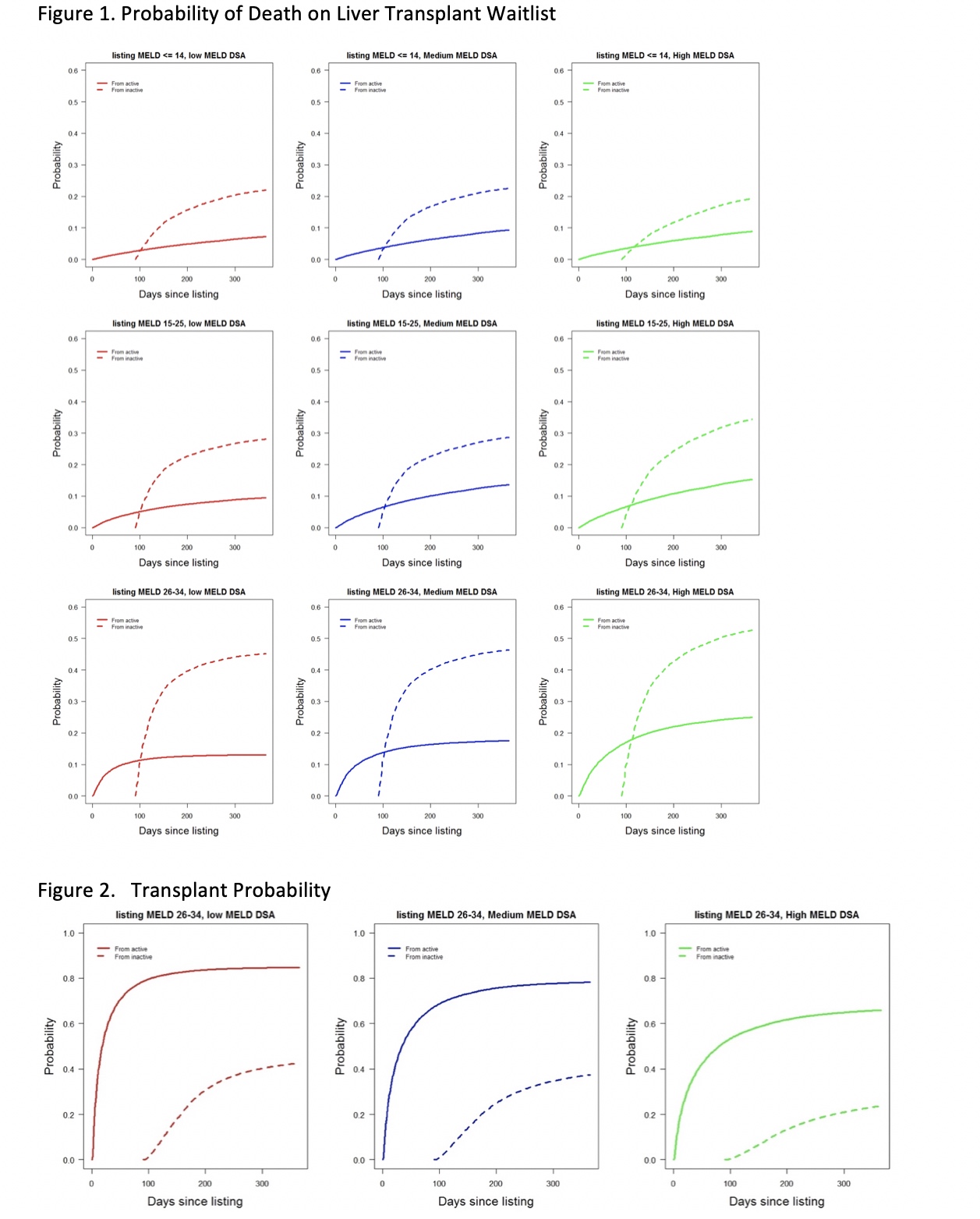The Link between Waitlist Mortality and Access to Transplant, an Imaginative Reality
1Surgery, Yale University School of Medicine, New Haven, CT, 2UNOS, Richmond, VA, 3Yale University, New Haven, CT
Meeting: 2020 American Transplant Congress
Abstract number: B-116
Keywords: Allocation, Liver, Liver transplantation, Mortality
Session Information
Session Name: Poster Session B: Liver: MELD, Allocation and Donor Issues (DCD/ECD)
Session Type: Poster Session
Date: Saturday, May 30, 2020
Session Time: 3:15pm-4:00pm
 Presentation Time: 3:30pm-4:00pm
Presentation Time: 3:30pm-4:00pm
Location: Virtual
*Purpose: Liver transplant waitlist mortality due to inadequate access to livers is the Achilles heel in liver transplantation in United States. This remains amongst the top priorities for the Government of United States, directed to the Organ Procurement and Transplant Network (OPTN) for effective liver allocation models to ensure reasonable parity exist amongst the various donor service areas (DSAs). However, the link between liver transplant and waitlist mortality maybe due to factors other than access to organs.
*Methods: We constructed a case-mix adjusted, multistate model using the OPTN database (06/18/2013 to 06/08/2018) to calculate the probability of the following competing risks for liver candidates: deceased donor transplant, living donor transplant, death, or WL removal for other/well. MELD exception patients including Status-1 were excluded. We grouped DSA’s by their median MELD at transplant (MMaT) and separated them into tertiles (low, medium, high MMaT DSA). Following an active listing, we measured the probability of death with and without an inactive status change, 90 days from listing. In Figure 2, Note: the probabilities are predicted for a 56 years old non-Hispanic white male, with blood type O and private insurance.
*Results: There were 25,216 patients of which 378 (1.5%) were listed inactive.1. Inactive status in itself was associated with higher incidence of mortality versus active status. This was true in all MELD quartiles and DSA tertiles. However, the impact of inactivity was variable, with a higher impact in low MMaT DSA centers versus high MMaT DSA centers (1-year mortality 24% vs 19%). This was more distinct in MELD<14 patients (fig 1.)2. In MELD group 26-34, mortality risk whilst waiting in “Active” status was greater in high MMaT DSA centers, but since the probability of transplant was also lower when compared to the low or medium MMaT DSAs, this may be attributed to poorer access to organs for high MMaT DSA or differences in management of inactive patients (Fig 2.)
*Conclusions: 1. Inactive status at 90 days on the liver transplant waiting list is an independent predictor of mortality, and the impact of inactivity is variable across DSAs with different MMaT. 2. The variability in mortality rate amongst DSAs reflects the differential access to organs for liver transplant or potentially other factors in how centers manage inactive patients
To cite this abstract in AMA style:
Batra R, Mulligan D, Haakinson D, Noreen S, Stewart D, Gan G, Deng Y, Kulkarni S. The Link between Waitlist Mortality and Access to Transplant, an Imaginative Reality [abstract]. Am J Transplant. 2020; 20 (suppl 3). https://atcmeetingabstracts.com/abstract/the-link-between-waitlist-mortality-and-access-to-transplant-an-imaginative-reality/. Accessed January 6, 2026.« Back to 2020 American Transplant Congress

